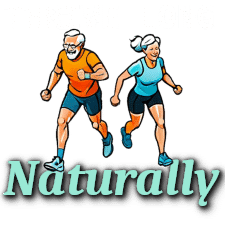Osteoporosis Prevention Diet Plan: Building Strong Bones for Life
Imagine your bones as the sturdy framework of a house. Just like a house, your bones need constant care and the right materials to stay strong and resilient. Osteoporosis, a condition characterized by weakened bones, can compromise this framework, making it brittle and prone to fractures. But here’s the empowering truth: you can significantly influence your bone health through a carefully crafted osteoporosis prevention diet plan.
Understanding Osteoporosis and Its Risk Factors
Osteoporosis, meaning porous bone, develops when bone density decreases, making bones fragile and susceptible to breaks. It’s often called a silent disease because bone loss can occur without any symptoms. Many people don't realize they have osteoporosis until a fracture occurs, often in the hip, spine, or wrist.
Several factors can increase your risk of developing osteoporosis:
**Age:Bone density naturally decreases with age, particularly after menopause in women.
**Gender:Women are more likely to develop osteoporosis than men due to hormonal changes during menopause.
**Family History:Having a family history of osteoporosis increases your risk.
**Race:Caucasian and Asian women are at higher risk.
**Body Size:Individuals with smaller body frames are at greater risk because they may have less bone mass to begin with.
**Hormonal Imbalances:Low estrogen levels (in women) and low testosterone levels (in men) can contribute to bone loss.
**Certain Medical Conditions:Conditions such as celiac disease, inflammatory bowel disease, kidney disease, and rheumatoid arthritis can increase the risk.
**Medications:Long-term use of certain medications, such as corticosteroids, can weaken bones.
**Lifestyle Factors:Poor diet, lack of exercise, smoking, and excessive alcohol consumption can all contribute to osteoporosis.
The Cornerstone Nutrients: Calcium and Vitamin D
While a comprehensive diet is crucial, calcium and vitamin D are the undisputed stars of bone health. They work synergistically to maintain bone density and strength.
Calcium: The Building Block
Calcium is the primary mineral that makes up your bones. Getting enough calcium is essential for building and maintaining strong bones throughout life. The recommended daily intake of calcium varies with age and gender:
**Adults (19-50 years):1,000 mg
**Adults (51+ years):1,200 mg
**Women over 50:1,200 mg
**Men over 70:1,200 mg
Top sources of calcium include:
**Dairy Products:Milk, yogurt, cheese (opt for low-fat or fat-free options)
**Leafy Green Vegetables:Kale, collard greens, spinach (while spinach contains calcium, it also contains oxalates, which can inhibit calcium absorption)
**Fortified Foods:Plant-based milk alternatives (almond, soy, oat), orange juice, cereals
**Canned Fish with Bones:Sardines, salmon (the small, edible bones are a great source of calcium)
**Tofu:Especially calcium-set tofu
Vitamin D: The Absorption Assistant
Vitamin D helps your body absorb calcium. Without sufficient vitamin D, your body can't effectively utilize the calcium you consume, rendering it less beneficial for your bones.
The recommended daily intake of vitamin D is:
**Adults (19-70 years):600 IU (International Units)
**Adults (71+ years):800 IU
Sources of Vitamin D:
**Sunlight:Your body produces vitamin D when exposed to sunlight. However, factors like skin pigmentation, time of day, and geographic location can influence vitamin D production.
**Fatty Fish:Salmon, tuna, mackerel
**Egg Yolks:Contain small amounts of vitamin D.
**Fortified Foods:Milk, cereal, orange juice
Many people, especially those living in northern latitudes or with limited sun exposure, may need to take a vitamin D supplement to meet their daily requirements. Consult your doctor to determine the appropriate dosage for you.
Beyond Calcium and Vitamin D: Other Essential Nutrients
While calcium and vitamin D take center stage, other nutrients play supporting roles in maintaining bone health:
**Vitamin K:Important for bone mineralization and helps to reduce the risk of fractures. Sources include leafy green vegetables (kale, spinach, collard greens), broccoli, and Brussels sprouts.
**Magnesium:Plays a role in bone structure and calcium absorption. Sources include nuts, seeds, whole grains, and leafy green vegetables.
**Phosphorus:Works with calcium to build strong bones. Sources include dairy products, meat, poultry, fish, and eggs.
**Potassium:May help to reduce calcium loss from the body. Sources include bananas, potatoes (with skin), sweet potatoes, beans, and prunes.
**Vitamin C:An antioxidant that helps protect bones from damage. Sources include citrus fruits, berries, peppers, and broccoli.
**Protein:Essential for building and repairing tissues, including bone. Aim for lean protein sources like poultry, fish, beans, lentils, and tofu.
Foods to Limit or Avoid
Certain foods can negatively impact bone health by interfering with calcium absorption or increasing calcium loss:
**Excessive Sodium:High sodium intake can increase calcium excretion in the urine. Limit processed foods, fast food, and salty snacks.
**Excessive Caffeine:High caffeine consumption can interfere with calcium absorption. Limit coffee, tea, and soda intake.
**Alcohol:Excessive alcohol consumption can interfere with bone formation and increase the risk of falls.
**Phytic Acid:Found in some grains and legumes, phytic acid can bind to calcium and reduce its absorption. Soaking or sprouting these foods can help reduce their phytic acid content.
**Oxalates:Found in some vegetables like spinach and rhubarb, oxalates can also bind to calcium. However, the overall health benefits of these vegetables generally outweigh the potential negative impact on calcium absorption.

Sample Osteoporosis Prevention Diet Plan
Here's a sample one-day meal plan incorporating bone-healthy foods:
**Breakfast:Oatmeal with berries and a sprinkle of nuts, fortified with milk or plant-based milk.
**Lunch:Salad with grilled chicken or chickpeas, mixed greens, and a variety of colorful vegetables. Top with an olive oil-based dressing.
**Dinner:Baked salmon with roasted broccoli and sweet potato.
**Snacks:Yogurt, a handful of almonds, or a piece of fruit.
Remember, this is just a sample plan. You can adjust it to fit your individual needs and preferences. Focus on incorporating a variety of bone-healthy foods into your daily diet.
Lifestyle Factors That Complement Your Diet
While diet is a cornerstone of osteoporosis prevention, it's most effective when combined with other healthy lifestyle choices:
**Weight-Bearing Exercise:Activities that force you to work against gravity, such as walking, jogging, dancing, and weightlifting, are especially beneficial for bone health. These exercises stimulate bone formation and help to increase bone density.
**Strength Training:Helps build muscle mass, which can improve balance and coordination, reducing the risk of falls.
**Maintain a Healthy Weight:Being underweight can increase the risk of bone loss.
**Quit Smoking:Smoking has a negative impact on bone density.
**Limit Alcohol Consumption:Excessive alcohol intake can weaken bones.
**Fall Prevention:Take steps to reduce your risk of falls, such as wearing appropriate footwear, removing tripping hazards from your home, and improving your balance.
Supplements: When Are They Necessary?
Ideally, you should obtain most of your nutrients from food. However, supplements can be helpful in certain situations, such as:
**Calcium Supplements:If you have difficulty getting enough calcium from your diet, a calcium supplement may be necessary. Talk to your doctor about the appropriate type and dosage of calcium supplement for you.
**Vitamin D Supplements:Many people, especially those with limited sun exposure, need to take a vitamin D supplement.
**Other Supplements:In some cases, your doctor may recommend other supplements, such as vitamin K or magnesium.
It's crucial to talk to your doctor before taking any supplements, as some supplements can interact with medications or have adverse effects.
Monitoring Your Bone Health
Regular bone density screenings are essential for monitoring your bone health and detecting osteoporosis early. A bone density test, also known as a DEXA scan, measures the density of your bones in your hip and spine.
The National Osteoporosis Foundation recommends bone density testing for:
Women age 65 and older
Men age 70 and older
Individuals who have broken a bone after age 50
Individuals with risk factors for osteoporosis
Your doctor can help you determine when you should start bone density screenings and how often you should be tested.
The Power of Prevention: Starting Today
Osteoporosis is a serious condition, but it's also preventable. By adopting a bone-healthy diet and lifestyle, you can significantly reduce your risk of developing osteoporosis and maintain strong bones for life. Take control of your bone health today by making informed choices about your diet, exercise, and lifestyle. Remember, building strong bones is a lifelong journey, and it's never too late to start. A proactive approach, combining a balanced osteoporosis prevention diet plan with regular exercise and medical monitoring, provides the best defense against this silent threat, ensuring a future of strength and vitality.

